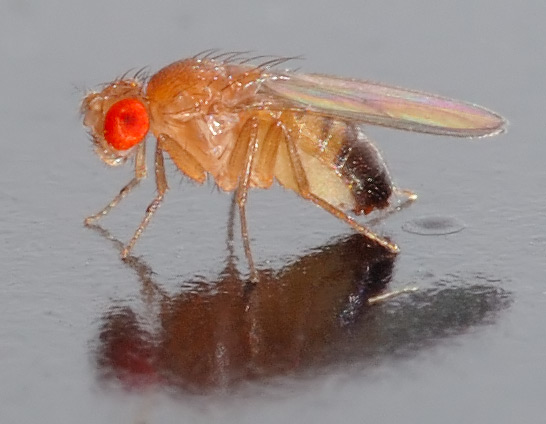|
|
Post by another specialist on May 20, 2005 16:57:02 GMT
Nalo makamae
Drosophila ochrobasis
Nalo makamae (Drosophila ochrobasis) was endemic to the island of Hawai‘I where it was
regularly collected-- sometimes in large numbers-- between 1967-1975 on State of Hawaii
land at Ký puka and Alakahi Stream [273]. It was also seen on private lands at Ký puka
Pahipa and Hualalai. It was last seen in 1986 [273, 435].
|
|
|
|
Post by sebbe67 on Jan 2, 2007 12:01:00 GMT
Drosophila ochrobasis was widely distributed between 1,189 to 1,615 meters
(3,900 and 5,300 feet) in mesic to wet forest areas on the island of Hawaii. Drosophila
ochrobasis has been recorded from 10 localities on 4 of the island’s 5 volcanoes
(Hualalai, Mauna Kea, Mauna Loa, and the Kohala mountains). Recorded almost every
year from 1967 to 1975, sometimes in relatively large numbers (135 occurrences in the
period between 1970 and 1974), D. ochrobasis is now largely absent from its historical
localities. A single individual of D. ochrobasis was last observed at the 1855 lava flow
(Kipuka 9 and Kipuka 14) in 1986 (Kaneshiro and Kaneshiro 1995; K. Kaneshiro, in litt.
2005a). Several surveys between 1995 and 1997
|
|
|
|
Post by Bowhead Whale on Jan 25, 2007 19:10:31 GMT
What are "drosophila's"? What kind of insects are they, exactly? Are they Coleoptera?
|
|
|
|
Post by sebastian on Jan 26, 2007 1:05:58 GMT
Drosophila is a genus of small flies whose members are often called small fruit flies, or more appropriately vinegar flies, wine flies, pomace flies, grape flies, and picked fruit-flies. A second insect family, the Tephritidae are also called fruit flies; they feed on unripe or ripe fruit. One species in particular, Drosophila melanogaster, has been heavily used in research in genetics and is a common model organism in developmental biology. Indeed, the terms "fruit fly" and "Drosophila" are often used synonymously with D. melanogaster in modern biological literature. The entire genus, however, contains about 1,500 species and is very diverse in appearance, behavior, and breeding habitat.  Drosophila melanogasteren.wikipedia.org/wiki/Drosophila Drosophila melanogasteren.wikipedia.org/wiki/Drosophila |
|
|
|
Post by Bowhead Whale on Jan 26, 2007 19:18:56 GMT
Oh! I see. Thanks for the explanation, Sebastian.
|
|
|
|
Post by Sebbe on Jan 10, 2015 15:55:45 GMT
|
|
|
|
Post by Melanie on Jan 10, 2015 16:12:43 GMT
How could Magnacca be sure that he rediscovered this particular species? Drosophila flies could be very similar and especially this one might be confused with Drosophila setosimentum (especially the females are not distinguishable). |
|
|
|
Post by Melanie on Jan 22, 2015 19:53:14 GMT
D. ochrobasis was rediscovered in 2006 and again in 2009/2010. Source: ecos.fws.gov/docs/five_year_review/doc4094.pdf. I have also informed Natureserve on the rediscovery of D. lanaiensis and D. ochrobasis. The update will be hopefully this year. Well, I might do the same with the IUCN Red List but there is little hope that the status update will be this year.
|
|